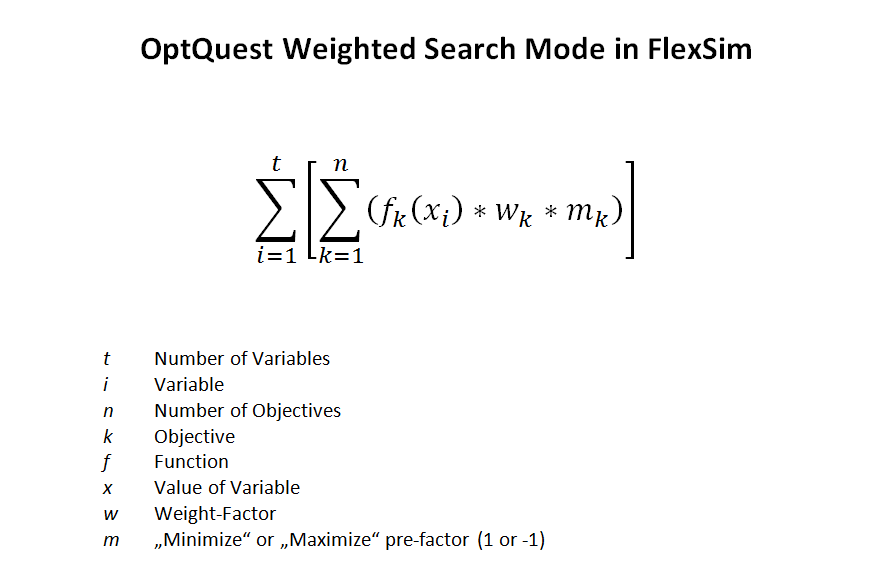Hello,
I have a question on OptQuest in addition with FlexSim.
OptQuest supports a "weighted" search strategy in FlexSim.
If there are Pareto optimality cases, how does OptQuest involves the "Performance Measures"?
If I set one measure to factor 2 and one measure to factor 1, how does OptQuest handle this setting?
I read the white paper for OptQuest, but at section 4.3. "Advanced Features" at "multiple objectives" there are no explicit definitions.
In the FlexSim Manual I also found nothing specific. I think that OptQuest calculates percental with those weight values when it finds a Pareto-Frontier, but thats just guessing. Do you can give me any explanations?
Regards Sebastian

